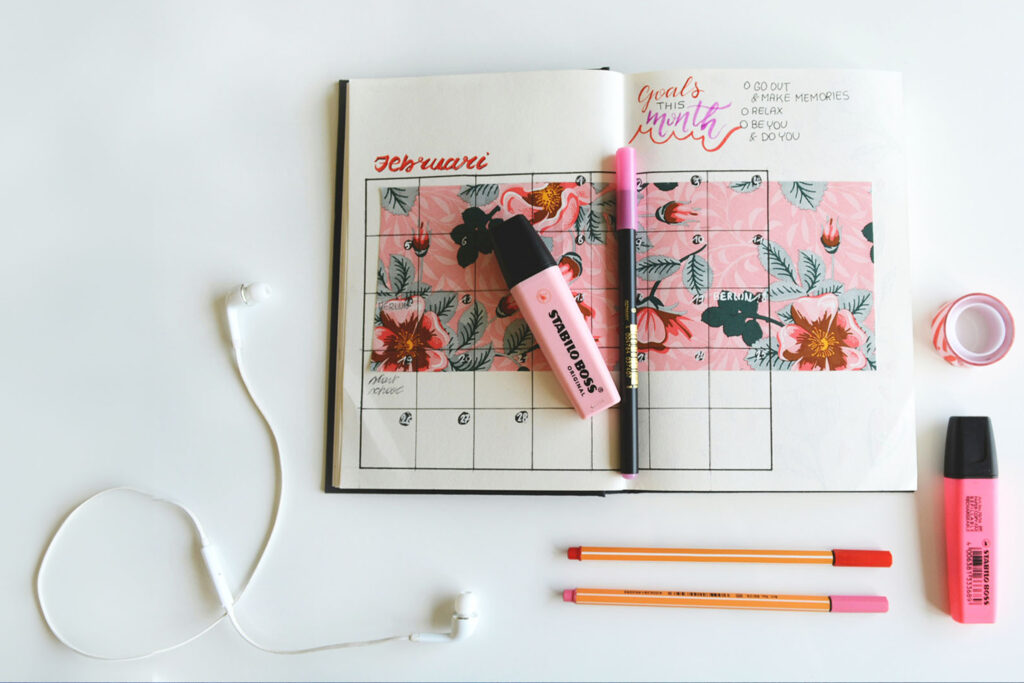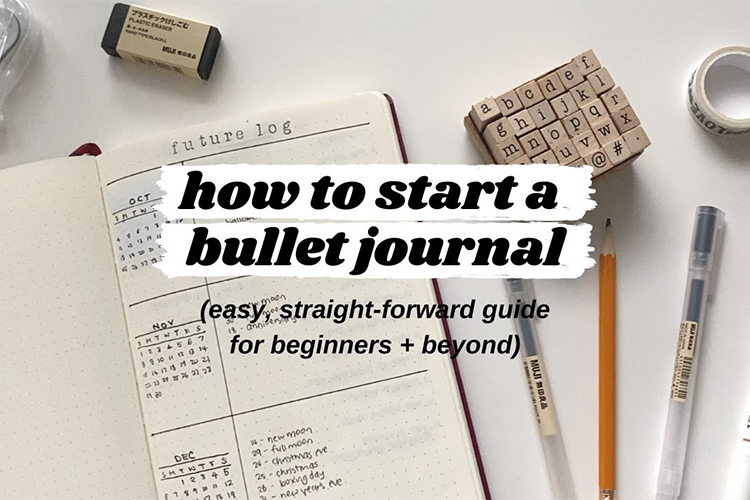
Bullet journaling is a popular method of keeping track of daily tasks, events, and goals. It is a versatile system that allows you to organize your life in a way that works best for you. If you are new to bullet journaling, starting can seem overwhelming. However, with a few simple steps, you can create a bullet journal that is personalized and tailored to your needs.
The first step in starting a bullet journal is to choose a journal that you love. There are many different types of journals available, ranging from hardcover to softcover, dotted to lined, and large to small. Consider your personal preferences and choose a journal that you will be excited to use every day.
Next, gather your supplies. While a bullet journal can be as simple or as complex as you want it to be, you will need a few basic supplies to get started. These may include a pen, pencil, ruler, eraser, and any other decorative supplies that you may want to use, such as stickers or washi tape.

One of the unique features of bullet journaling is the use of a key. A key is a set of symbols that you use to represent different types of tasks or events. For example, a bullet point may represent a task that needs to be completed, while a circle may represent an event that is scheduled. Creating a key will help you stay organized and make it easier to quickly identify different types of entries in your journal.
Another essential component of bullet journaling is the index. An index is a table of contents that you create as you go along, allowing you to easily find specific pages or entries in your journal. To set up your index, number each page in your journal and then create a page at the front of your journal to list the corresponding page numbers and a brief description of the content on each page.
A future log is a place where you can plan and organize events that are happening in the future. To create a future log, divide a page into six sections, one for each month of the year. In each section, write down any events or appointments that you have scheduled for that month.
A monthly log is a place where you can plan and organize your tasks and events for the month. To create a monthly log, start by creating a page for the month and writing the name of the month at the top. Then, create two columns: one for a list of tasks that need to be completed and one for events that are scheduled for the month.

A daily log is a place where you can keep track of your tasks and events for each day. To create a daily log, start by creating a page for the day and writing the date at the top. Then, use your key to create bullet points or symbols to represent your tasks and events for the day. Be sure to include any appointments, meetings, or deadlines that you have.
Finally, customize your bullet journal to fit your personal style and needs. Add decorative elements such as stickers or washi tape to make it more visually appealing, or use different colors to help you stay organized. You may also want to experiment with different layouts or formats to find what works best for you.
Before you start creating your bullet journal, it is important to determine what your goals are. Are you trying to increase your productivity? Are you trying to manage your time more efficiently? Or are you simply looking for a creative outlet? Once you determine your goals, you can start designing your bullet journal to meet those needs.
One of the great things about bullet journaling is that you can customize the layout to fit your needs. Take some time to plan out how you want your journal to be organized. Do you want a separate page for each day, or do you prefer a weekly spread? Do you need a separate section for notes? Or do you prefer to incorporate notes into your daily logs? Think about how you want to organize your journal, and then start creating your pages.
As you start using your bullet journal, you may find that certain layouts work better for you than others. Don’t be afraid to experiment with different layouts until you find one that works best for you. Some people prefer a minimalist approach, while others prefer a more decorative style. Try different layouts and see what works best for you.
Color coding is a great way to stay organized and make it easy to find specific information in your bullet journal. You can assign different colors to different types of tasks or events. For example, you could use blue for work-related tasks, green for personal tasks, and red for urgent tasks. Color coding can make your bullet journal more visually appealing and functional.
Habit trackers are a popular feature in bullet journals. They allow you to keep track of daily habits that you want to form or break. For example, you could create a habit tracker for drinking enough water each day or for going to bed at a certain time. Habit trackers can help you stay accountable and make it easier to track your progress over time.
One of the benefits of bullet journaling is that it allows you to reflect on your progress and adjust your goals as needed. Make time to reflect on your goals and progress regularly. You may want to create a separate page in your journal for reflections, or you could incorporate reflections into your daily logs.
Remember, bullet journaling is supposed to be a tool to help you stay organized and on track. Don’t be too hard on yourself if you miss a day or forget to log a task. The point is to use your bullet journal to make your life easier, not to create additional stress.
In conclusion, starting a bullet journal is a great way to stay organized and focused on your goals. By determining your goals, planning your layout, experimenting with different layouts, using color coding, incorporating habit trackers, making time for reflection, and not being too hard on yourself, you can create a bullet journal that works best for you. Remember, your bullet journal is meant to be a tool to help you, so have fun with it and enjoy the process!